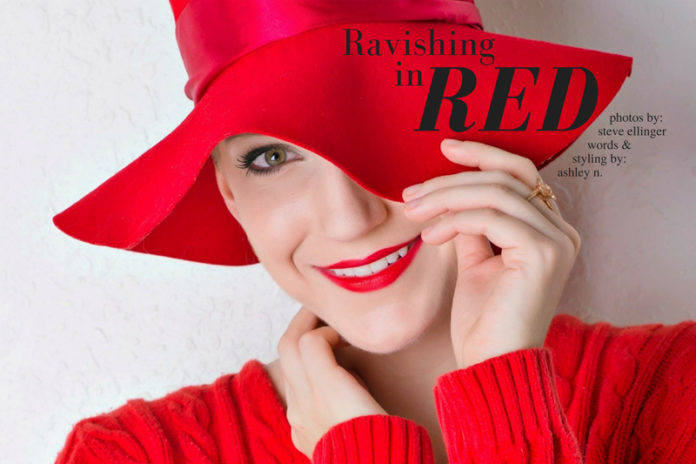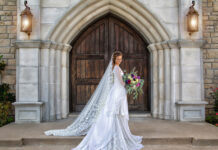by Steve Ellinger
One of the things I dearly love about photography is the diverse directions that photographers take in their career. I think most would agree that the money is made today in wedding, senior, and baby photography. But there are those that have been successful in one way or another doing a much more narrowly defined area of photography. I count myself among those in the latter. As a fashion and agency-testing photographer, I am among the few that have either chosen this direction, or have simply had luck guide me in this path.
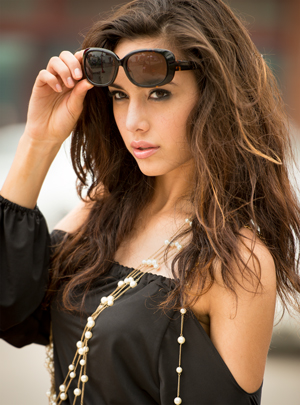 I am often asked about how one becomes a photographer that agencies may use at times. It’s a tough path, one that becomes an endless challenge. I suggest finding a suitable subject that meets most agency standards of at least 5’-9”, and a weight of about 125 lbs, with proportional measurements. Look at examples of what others have done on agency websites and try to shoot a similar look and style. Don’t copy, but use the examples as inspiration. Then, if you are confident and have some thick skin, submit a few photos to some agencies and see what happens. With any luck you may find a nice response and some opportunities.
I am often asked about how one becomes a photographer that agencies may use at times. It’s a tough path, one that becomes an endless challenge. I suggest finding a suitable subject that meets most agency standards of at least 5’-9”, and a weight of about 125 lbs, with proportional measurements. Look at examples of what others have done on agency websites and try to shoot a similar look and style. Don’t copy, but use the examples as inspiration. Then, if you are confident and have some thick skin, submit a few photos to some agencies and see what happens. With any luck you may find a nice response and some opportunities.
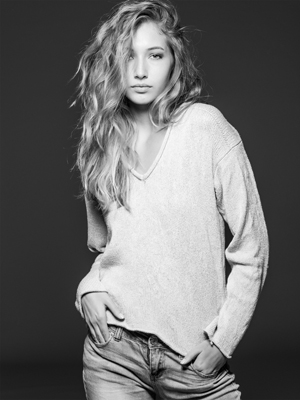 Agency testing seems to be a little understood area of photography that seems to break all the rules, and does not play by the same standards that most photographers subscribe to. So what is “agency testing?” “Testing” is industry speak for “portfolio updates.” Professional agency models tend to vary looks frequently with new hairstyles, make-up techniques, trends, etc. It is critical that agencies always have a current photographic representation of their models.
Agency testing seems to be a little understood area of photography that seems to break all the rules, and does not play by the same standards that most photographers subscribe to. So what is “agency testing?” “Testing” is industry speak for “portfolio updates.” Professional agency models tend to vary looks frequently with new hairstyles, make-up techniques, trends, etc. It is critical that agencies always have a current photographic representation of their models.
I have agencies tell me that they like their models to test every six months, and if in the 13-17 age range, about every three months due to their rapidly changing figures. Keep in mind that an agency needs photographs that clearly illustrate how a model appears in basic lifestyle and studio settings. This of course is to allow the agencies clients to make model selections that will best suit add campaigns and promotional endeavors.
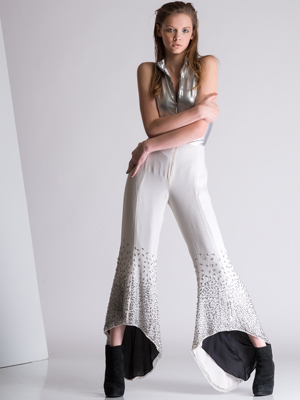 One of the most common mistakes that I see beginning fashion and testing photographers make is to try and shoot content that looks like a magazine cover significantly altering the basic state of how the model actually appears. The generally rule is “don’t shoot a magazine cover unless it is for a magazine.” Such photos are generally unusable to the agencies for testing purposes and will result in being rejected.
One of the most common mistakes that I see beginning fashion and testing photographers make is to try and shoot content that looks like a magazine cover significantly altering the basic state of how the model actually appears. The generally rule is “don’t shoot a magazine cover unless it is for a magazine.” Such photos are generally unusable to the agencies for testing purposes and will result in being rejected.
The difference in an agency being awarded a major contract and having their models selected is very much dependent on the accuracy of the models photographs.
There are basically three areas of photography agencies use. “Digitals” or at times called “polaroids”, “comp cards”, and their “look book.” Digitals, usually 3-1/2”x5” or 4”x6” size, are very simple photos that show the model with no make-up and with clothing, (most often swimwear) that will clearly show their figure. Often shot by the agency itself in their office in natural light against a plain white wall, the digital is a very honest representation of the models appearance in an unaltered state. Digitals allow the agency to book a model with absolute confidence in the models appearance. For a model to arrive at a shoot and not appear as represented is detrimental to future work with the agency.
Comp cards are what the model leaves behind at castings, or are sent out by agencies to clients. Although a size of 5-1/2” x 8-1/2” is usually listed as the standard, I have them in every size imaginable, especially from agencies in London and Paris. The card will have 2-5 photos of the model as well as their measurements and the agency contact information. These are printed by the agencies in small quantities as they are updated often as the model does newer work.
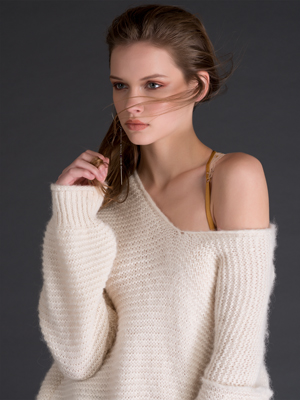 The “look book” is their portfolio. Books are almost always in a 9×12 size, which is to allow ‘tear sheets” from magazines, etc., in which they have been featured. They also contain photographs from recent shoots and can be changed quickly to customize the content for a particular casting. A typical book will contain 8-15 images, just enough to illustrate the models look and ability. The book itself is provided by the agency, and usually has the agency logo, etc., printed on the cover.
The “look book” is their portfolio. Books are almost always in a 9×12 size, which is to allow ‘tear sheets” from magazines, etc., in which they have been featured. They also contain photographs from recent shoots and can be changed quickly to customize the content for a particular casting. A typical book will contain 8-15 images, just enough to illustrate the models look and ability. The book itself is provided by the agency, and usually has the agency logo, etc., printed on the cover.
The model takes the book to castings and “go-sees” to meeting with clients looking to book a model. An interesting fact is that they are often called “scuba books” by the sellers as they are covered in the same material as used in the fabrication of scuba diving suits so as to repel rain when models attending castings in rainy weather. Some now use I-pads with their portfolio, but the ability to open a real book and see real prints will never go out of style.
Creating good images for an agency is a combination of several things. First is a good understanding of photography, especially lighting and composition for agency testing that will show the model. Fashion and testing photography requires a totally different understanding of lighting that is normally used for portraits and senior picture photographers. In addition, it is critical to provide images that are simple, yet modern, and can promote the model, and not the photographer. Remember, it is about the model, not the person behind the lens.
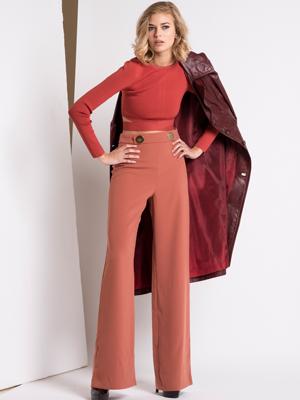 In a studio setting, most really good testing work can be done with one light, and an appropriate modifier, such as large softbox or octabox and a roll of simple seamless. Depending on the purpose of the shoot, I may add additional lights, usually not exceeding four. Glamour lighting, which is totally different than lighting for testing may use six to eight lights. Do not let the background detract from the model. A good professional model will stand on-set, find the light, work to that light and deliver pose after pose with little to no instruction. Do not become a slave to typical broad and short lighting techniques. Leave that to portrait photography print competitions.
In a studio setting, most really good testing work can be done with one light, and an appropriate modifier, such as large softbox or octabox and a roll of simple seamless. Depending on the purpose of the shoot, I may add additional lights, usually not exceeding four. Glamour lighting, which is totally different than lighting for testing may use six to eight lights. Do not let the background detract from the model. A good professional model will stand on-set, find the light, work to that light and deliver pose after pose with little to no instruction. Do not become a slave to typical broad and short lighting techniques. Leave that to portrait photography print competitions.
A testing photographer’s main task is to show the model, even if that means a flatter lighting technique than is typically taught. And by all means leave the liquefy tool alone. Accurate representation of the model is the key. A variety of images are needed including full-figure, ¾ figure, and headshots in a variety of complimentary wardrobes. The model should have minimal make-up and simple hairstyles. I prefer the 85mm 1.4 lens for my fashion and testing work as I find the focal length well suited for this type of work.
Postproduction should be minimal. Another huge mistake I see beginning testing photographers make is to follow the rules of photography, as odd as that may sound. As I said earlier, this type of photography breaks the rules. But so does fashion in general, and the two go hand-in-hand. Fashion is cutting edge design, so should the photography. Think about that for a moment. Typical techniques that you were most likely taught in photography courses and subsequently show up in a submittal to an agency will most likely not result in your work getting selected. I fully realize that ruffles a few feathers, but as I have stated, testing and fashion photography is unlike any other type and requires a totally different mind-set.
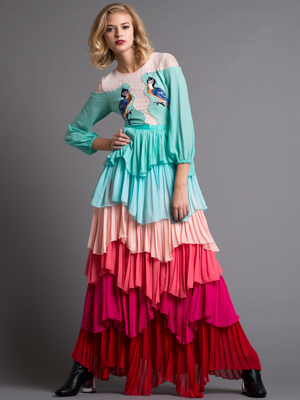 A technique that many fashion photographers use in cropping is to slightly cut off the top of the head, and at times the feet as this results in drawing the eye to the wardrobe instead of the model. I often use this as well in testing, resulting in filling the frame with the model. Very little if any “real estate” should be present around the model. Watch as well the “say cheese” smiles. Do you ever wonder why fashion models seldom smile? It is because doing so may draw attention to them rather than the wardrobe or other purpose of the image. Another thing that will result in your photos being filed in the round can by the desk is having your name or logo plastered on the photo. Leave it off!
A technique that many fashion photographers use in cropping is to slightly cut off the top of the head, and at times the feet as this results in drawing the eye to the wardrobe instead of the model. I often use this as well in testing, resulting in filling the frame with the model. Very little if any “real estate” should be present around the model. Watch as well the “say cheese” smiles. Do you ever wonder why fashion models seldom smile? It is because doing so may draw attention to them rather than the wardrobe or other purpose of the image. Another thing that will result in your photos being filed in the round can by the desk is having your name or logo plastered on the photo. Leave it off!
And if you must plaster your name on the photo(s) for your own use, be discrete. It is well known that the bigger the logo, the lesser the quality of image. Remember these are not senior photos, and it is not about you as the photographer. And by all means leave the silly high dynamic range processing and looks to your own personal amusement. Hopefully by incorporating these techniques into your work, and if agency testing is something that may pique your interest, you will be better equipped to make your first agency submittal a successful one!
I am excited that I will be teaching a week long course on this very topic during the 2017 Texas School of Professional Photography in April. I will have many samples, examples and lots of shooting, working with professional agency models with critiques of work. You can read more at www.texasschool.org. More work by Steve Ellinger, CPP can be found at www.steveellinger.com.
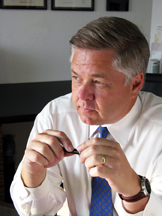 Steve Ellinger will be an instructor at the 2016 Texas School of Professional Photography, April 23-28. His class, “The Fashion Side of Photography,” is an intense week of shooting agency type portfolio images and agency testing using professional fashion, print, and runway models. It is designed to prepare you to break into doing agency work. For more information on his class, check out: www.TexasSchool.org.
Steve Ellinger will be an instructor at the 2016 Texas School of Professional Photography, April 23-28. His class, “The Fashion Side of Photography,” is an intense week of shooting agency type portfolio images and agency testing using professional fashion, print, and runway models. It is designed to prepare you to break into doing agency work. For more information on his class, check out: www.TexasSchool.org.
(ByLines):
Esmeralda Gutierrez, Ford Models, Chicago, and The Campbell Agency, Dallas
Lily Mekeel, The Dragonfly Agency, Dallas
Faith Lynch, IMG Worldwide Agency, NYC, and The Neal Hamil Agency, Houston
Faith Lynch, IMG Worldwide Agency, NYC, and The Neal Hamil Agency, Houston
Whitney Pavell, The Wilhelmina Agency, Chicago and The Dragonfly Agency, Dallas
Whitney Pavell, The Wilhelmina Agency, Chicago and The Dragonfly Agency, Dallas



